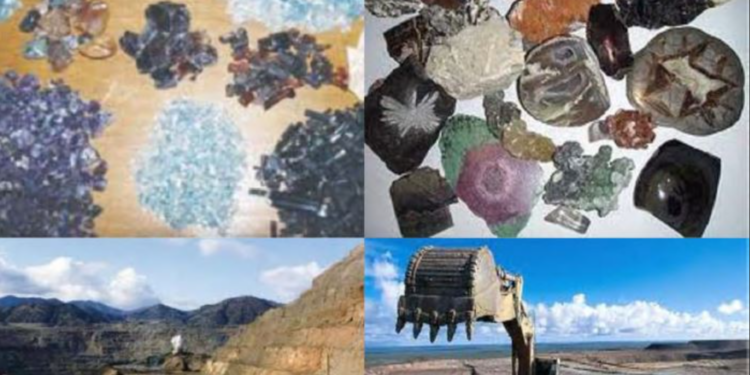The International Energy Forum has outlined a list of minerals crucial for the global energy transition.
These minerals were highlighted in the August 2023 Critical Mineral Outlooks Comparison Report released by the Forum.
According to the IEF, various countries and regions have identified these minerals as critical to the global energy transition and governments have independently developed lists of which materials constitute a “critical mineral” depending on; domestically available resources, import dependencies, importance to domestic energy systems, manufacturing base, energy policy priorities, and other criteria.
The identified critical minerals encompass a wide spectrum of critical minerals, each comprising distinct elements essential for various industrial and technological applications. At the forefront of this array are metals like:
- Lithium
- Indium
- Nickel
- Neodymium
- Dysprosium
- Gallium
- Copper
- Tellurium
- Praseodymium
Graphite, is pivotal in electronics, energy storage, and renewable technologies. Their presence ensures the optimal functionality of devices such as smartphones, electric vehicles, and solar panels.
Simultaneously, minerals like:
- Manganese
- Silver
- Molybdenum
- Chromium
- Aluminum
- Germanium
- Selenium
- Cadmium
- Silicon
- Platinum
Rare earth elements (REE) contribute to sectors ranging from aerospace to construction. These elements play integral roles in crafting durable materials, enhancing structural integrity, and enabling innovations in aerospace engineering.
The list also extends to encompass:
- Tin
- Lanthanum
- Zinc
- Vanadium
- Cerium
- Samarium
- Titanium
- Terbium
- Yttrium
Palladium, each possessing unique characteristics that bolster metallurgy, catalysis, and medical applications.
These elements are critical for manufacturing specialized alloys, supporting chemical reactions, and advancing medical diagnostics and treatments.
The roster also includes:
- Platinum group metals (PGM)
- Lead
- Tantalum
- Borate
- Strontium
- Iridium
- Steel
- Tungsten
- Magnesium
- Rhodium
- Phosphorus
- Rhenium
- Boron
- Potassium
- Europium
- Beryllium
- Ruthenium
- Gadolinium
- Zirconium
- Niobium.
These elements find their utility in fields as diverse as catalysis, nuclear energy, and agriculture, underscoring their multifaceted importance across various industries.
The presentation of these minerals, while comprehensive, might benefit from a structured arrangement that categorizes them based on common applications or industry relevance.
Additionally, expanding on the specific uses and significance of each mineral could provide readers with a deeper understanding of their roles in driving technological progress and economic development.
The IEF report also highlighted the fact that estimates of required critical minerals can also vary based on changes within a renewable energy technology category.
Factors such as cost, energy intensity, and consumer behaviour and preferences can also shape future markets and sub-technologies.
A part of the IEF report stated:
- “These sub-technologies in turn can further influence the specific minerals required for the energy transition. For instance, across solar energy there are different sub-technologies that have various chemistry and resource requirements.
- “The potential preference for cadmium telluride (CdTe) solar cells over the currently prevalent technology – crystalline silicon photovoltaic cells – could shift the demand for minerals like cadmium and tellurium in the future. However, the most prevalent example of sub-technologies driving chemistry shifts occurs in batteries.
- “Changes in mineral prices, processing expenses, policy incentives, technological development, and other factors have resulted in a multitude of battery cathode chemistry mixes such as nickel, manganese, cobalt (NMC), nickel, cobalt, aluminium oxide (NCA), and lithium, iron, phosphate (LFP) batteries.
























